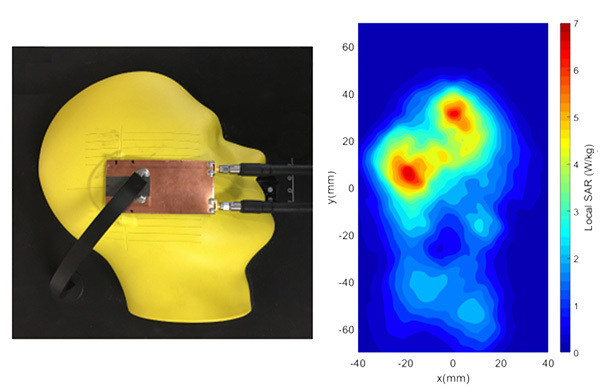Adaptive Method to Determine Electromagnetic Exposure Compliance of Multi-Antenna Wireless Devices
Tech ID: 18-090
Inventors: Dr. Bertrand Hochwald and Arash Ebadi Shahrivar
Date Added: August 22, 2019
Overview

Software algorithm that improves the efficiency of testing electromagnetic exposure levels of wireless devices.
Technology Summary
Wireless devices that come in close contact with people must be tested to ensure that human exposure to electromagnetic radiation is at or under certain standardized levels. 5G technology will drive the next generation of wireless devices and will require more antennas than ever. Each additional antenna requires a substantial increased in the number of electromagnetic exposure measurements, which slows down the safety testing process.
University of Notre Dame researchers have created a software algorithm that enables electromagnetic exposure levels to be accurately determined with fewer measurements, thus reducing the time it takes to test a multi-antenna wireless device for electromagnetic exposure compliance. This technology chooses antenna excitations adaptively in response to previous measurements, thereby significantly reducing the total number of excitations significantly compared to existing methods.
Market Advantages
- Optimizes efficiency by reducing the total number of electromagnetic excitations needed to determine compliance
- Improves turnaround time for device prototype testing
- Ready to implement for use with 5G technology
Technology Readiness Status
TRL 5 - Real World Validation
Intellectual Property
PCT/US2019/013238 (Methods and Apparatus for Determining Electromagnetic Exposure Compliance of Multi-Antenna Devices)
Publication
Determining Electromagnetic Exposure Compliance of Multi-Antenna Devices in Linear Time (Hochwald et al., 2017)
Contact
Richard Cox
574.631.5158